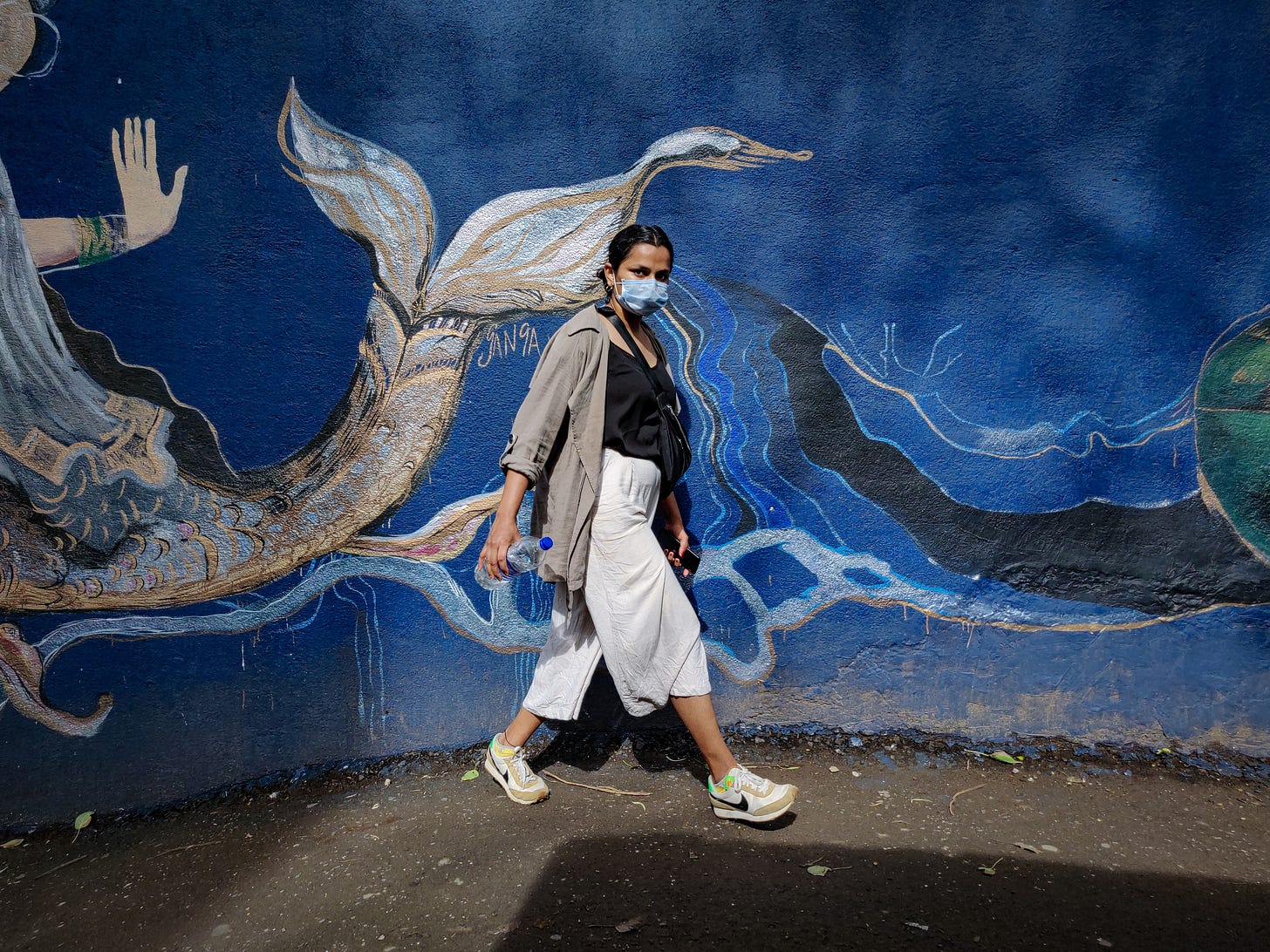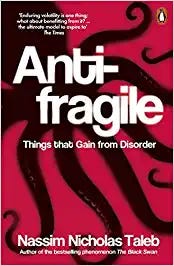ANTIFRAGILE INDIA
While resilient countries weather shocks, an antifragile nation thrives in a crisis. Does this explain India's post-covid rebound? EPISODE #114
Dear Reader,
A very Happy Monday to you.
Last week Prime Minister Narendra Modi made a curious claim about India. He characterised it as “antifragile”.
Like most, I too assumed that the PM was making his government’s case on first stabilising the economy they inherited in 2014 and then growing it despite some of the most inclement challenges—including a once in a century pandemic. This, till I revisited his speech and did some research.
Antifragile was coined by Nassim Taleb—the mathematician and former options trader who penned the cult book, Black Swan, which challenged conventional financial models. It was the title of a book Taleb released in 2013; its arguments hold for an individual as it does for a country.
According to him, normal policy responses seek to reduce a country’s fragility—while it should be striving to make a country antifragile. If it is the latter, the country will “gain from disorder.”
The PM is arguing that India has morphed into an antifragile nation—turning back-to-back setbacks into an opportunity. So this week I explore the idea of “Antifragile India”. Do read and share your feedback.
The poignant cover picture dating back to the covid-19 pandemic is sourced from Unsplash and taken by Ronak Naik.
A big shoutout to Madhu, Lakshmisha, Shiv, Atul, Ranjini, Aashish, Vandana, Debu, Premasundaran and Ajeet for your informed responses, kind appreciation and amplification of last week’s column. Once again, grateful for the conversation initiated by readers. Gratitude also to all those who responded on Twitter and Linkedin. Reader participation and amplification is key to growing this newsletter community. And, many thanks to readers who hit the like button😊

INDIA TRANSFORMED
Addressing the Global Business Summit hosted by the Economic Times last week, Prime Minister Narendra Modi claimed that appropriate policy action had enabled India to transform into an ‘antifragile’ nation.
Please click the link below if you wish to hear the actual speech.
And gist is as follows:
“The world has changed, global systems have changed, and India has also changed. In the recent past, we all have heard a lot of discussions around the interesting concept of 'anti-fragile'.
You are global leaders of the business world and are well versed with the meaning and spirit of 'anti-fragile': A system that not only combats adverse conditions, but also becomes stronger by using those conditions!”
Regardless of whether you agree or disagree with the PM’s claims, it is a fact that India staged a remarkable rebound in the post-covid phase. It has baffled both critics and experts alike.
Especially since this recovery is in the backdrop of unprecedented circumstances. The covid-19 pandemic, which had dodgy origins in Wuhan, China, was followed by an oil price shock. This disruption in global supply chains suffered a fresh setback after the breakout of the Russia-Ukraine conflict.
The acceleration in inflation across the world, especially in the United States, forced central governments to tighten money supply by a rapid increase in interest rates. This in turn lead to the appreciation of the dollar against most major currencies, including the Indian rupee.
All this did was to export inflation, as importing countries like India witnessed an increase in prices. Making a bad situation worse.
Through all this turmoil the India story was outstanding.
After contracting by a record 23% in the first quarter of 2020-21, the Indian economy rebounded in tandem with the easing of covid-19 pressure—not only did the virus diminish in strength and spread, the seamless rollout of the jab created another line of defence.
To cut a long story short, not only did India weather the worst challenge ever, it is now projected to be the fastest growing economy in the world. Essentially, it benefitted from the turmoil and disorder that has wracked the world—the classic metric of being antifragile.
AntiFragile
Like I shared in the introduction, the term antifragile was coined by Naseem Taleb. Most of us have heard about this mathematician and former options trader for his cult book—Black Swan—which challenged conventional financial models.
In his book, Antifragile, Taleb walks us through another profound thought: antifragile nations do not wilt in a crisis, neither do they merely weather the story. Instead they thrive in such disorder.
According to him:
“Some things (countries) benefit from shocks; they thrive and grow when exposed to volatility, randomness, disorder, and stressors and love adventure, risk, and uncertainty.
Yet, in spite of the ubiquity of the phenomenon, there is no word for the exact opposite of fragile. Let us call it antifragile.
Antifragility is beyond resilience or robustness. The resilient resists shocks and stays the same; the antifragile gets better.”
Building Resilience
The big question is whether India has indeed transformed into an antifragile nation? It may still be early days.
Yet it is also a fact, like I explained earlier, that India’s post-covid recovery has surprised everyone.
My own surmise, which I have argued repeatedly in this newsletter, is that the material basis of India has transformed dramatically as its citizens have undergone an unprecedented trading up.
The first signs of this change was visible in the first decade of this Millennium. The 2001 Census numbers clearly captured this makeover. Yes, it was very basic, but change was happening.
This process acquired unprecedented acceleration in the next decade. Access to banking, toilets, electricity, education, housing, drinking water and roads are nearing saturation levels in the economy.
This change would have been captured in Census 2021. However, the onset of the covid-19 pandemic in 2020 has forced a delay in conducting the latest Census. As a result, we have to take recourse to official surveys.
The recently released National Family Health Survey (NFHS)-5 is one such survey. It confirms a significant trading up.
In addition, we have data on rural road connectivity. A project that was initiated in 2001 by the then National Democratic Alliance headed by Atal Bihari Vajpayee. The project rollout continued under the United Progressive Alliance led by Manmohan Singh. From, 2014, the NDA under the leadership of Narendra Modi accelerated the programme.
Please check the graphic below.
This strategy of material empowerment combined with targeted anti-poverty measures—to resolve access to healthcare, hygiene and so on—have helped lower the incidence of poverty in the country. The United Nations Development Programme report (2022) on global poverty, disclosed that between 2005-06 and 2019-21 the number of poor in the country declined by 415 million—which is more than the population of the United States.
Please check the graphic below:
Undoubtedly this has transformed the socio-economic backbone of India. Which, I hazard, is what helped the populace mitigate the worst of the covid-19 fallout. Together, with the strong supply-side policy response, it cemented a surprising rebound of the Indian economy.
And, I would definitely throw in the efficiencies generated by India’s unique digital economy powered by Digital Public Goods (DPGs) like Aadhaar, UPI, CoWin and so on. Not only have they made the economy more efficient, these DPGs have democratised identity, payments, credit and so on. Undoubtedly it is a force multiplier of transformation.
Whether or not India is antifragile—in the way Taleb coined it—is a matter for economists to debate and slug it out.
But, there is no denying that the material basis of India has altered fundamentally. The frequency of anecdotal evidence backing this claim is only growing. We will have to await the Census numbers to be sure.
Till then let us hang on to this silver lining.
Recommended Viewing
Sharing the latest post of Capital Calculus on StratNews Global.
As I wrote previously, 15 February marked the third anniversary of Vande Bharat—the world class train produced indigenously by the Indian Railways.
It is a story of audacity, grit and determination. Vande Bharat or Train-18 (its working title within the Railways) had to overcome huge odds, including pushback from vested lobbies and red tape within the Indian Railways.
Sudhanshu Mani who spearheaded this project, shared the compelling story of Vande Bharat. Indeed it was also masterclass in leadership.
Do watch and share your feedback.
Till we meet again next week, stay safe








Thank you for the lucid explanation. I am deeply grateful to you for choosing and highlighting areas that not sufficiently covered in mainstream media.
What a transformative age we are living in! I never thought I would see this in my life time. What is astonishing is the pace and scope at which it is happening. At one end you have the lives of rural women being transformed thanks to MGNREGA, free rations, toilets, housing etc and on the other end you are seeing young college graduates creating tech solutions to real time problems! The felicity with which technology, especially digital technology, is being used and then adopted by the public, is simply marvelous.
I can give you an example from my village: what you wrote has been completely implemented in my village for the past few years, people have shredded their former thinking and are experiencing the change you described.